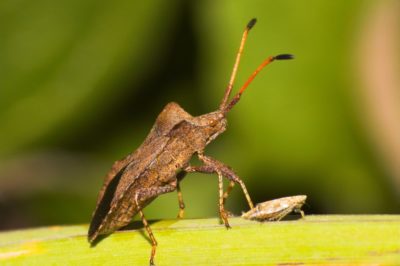Know Your Enemy: Squash Bug Identification and Lifecycle
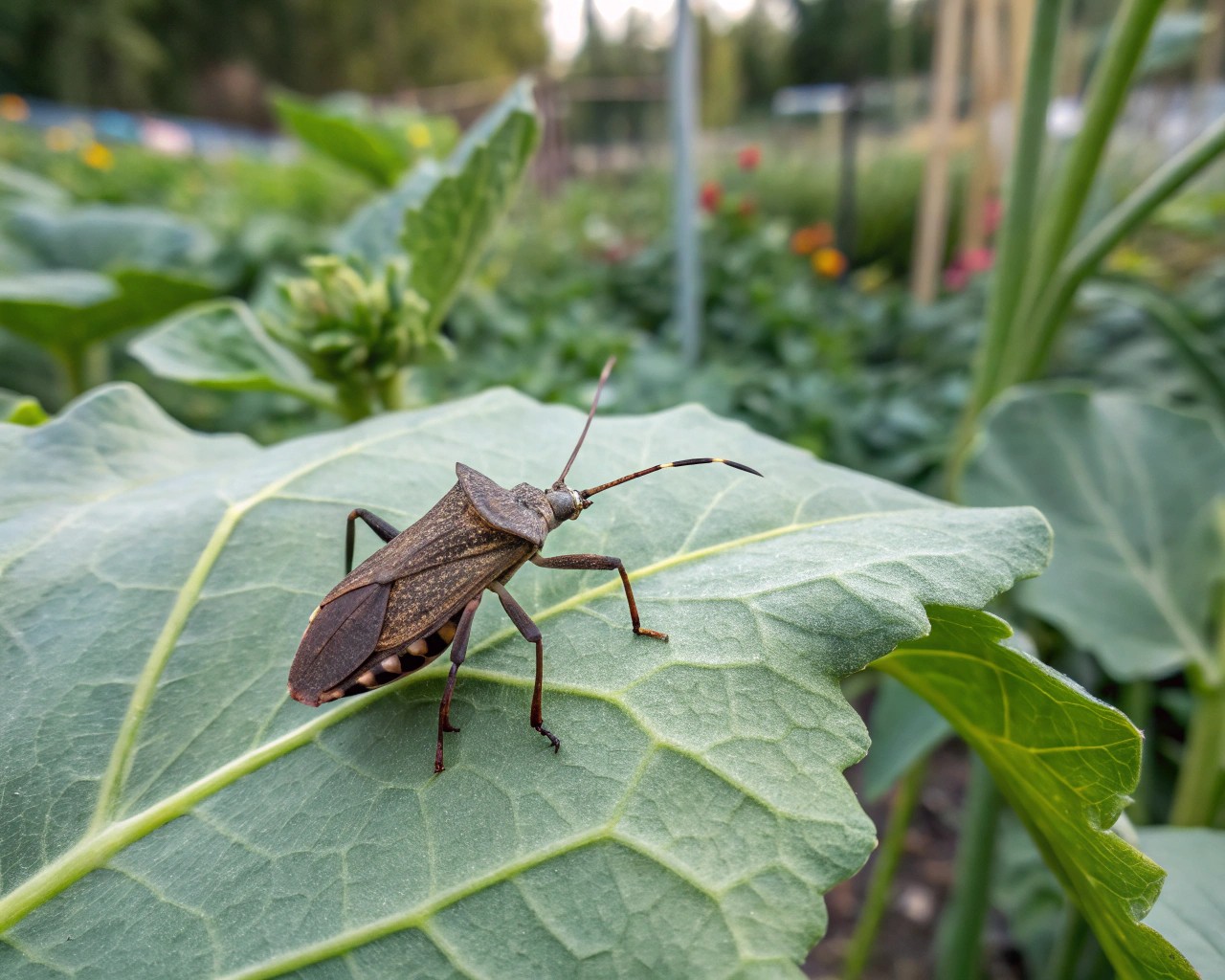
Squash bugs (Anasa tristis) are shield-shaped insects about 5/8 to 3/4 inch long, with flat, dark gray to brown bodies and gold-brown markings along their sides. They emit a strong odor when crushed and are often mistaken for stink bugs. Females lay clusters of bronze-colored eggs—usually around 20—in neat rows on the undersides of squash leaves.
Lifecycle highlights:
- Egg stage lasts 7–9 days
- Nymphal stage spans 33 days through 5 molts
- Adults live up to 130 days
In warmer climates, squash bugs can produce 2–3 generations per season; in northern regions, typically only one. Adults overwinter in sheltered areas and re-emerge in spring to begin reproduction.
Squash bugs are active feeders and especially damaging because of their long lifespan and ability to persist through unfavorable conditions. Their eggs hatch into pale nymphs that darken as they grow, and they tend to congregate in groups, compounding their destructive impact. It’s critical to start monitoring as soon as your plants are established in spring. A single missed infestation can explode into a damaging outbreak within weeks.
Understanding the Damage
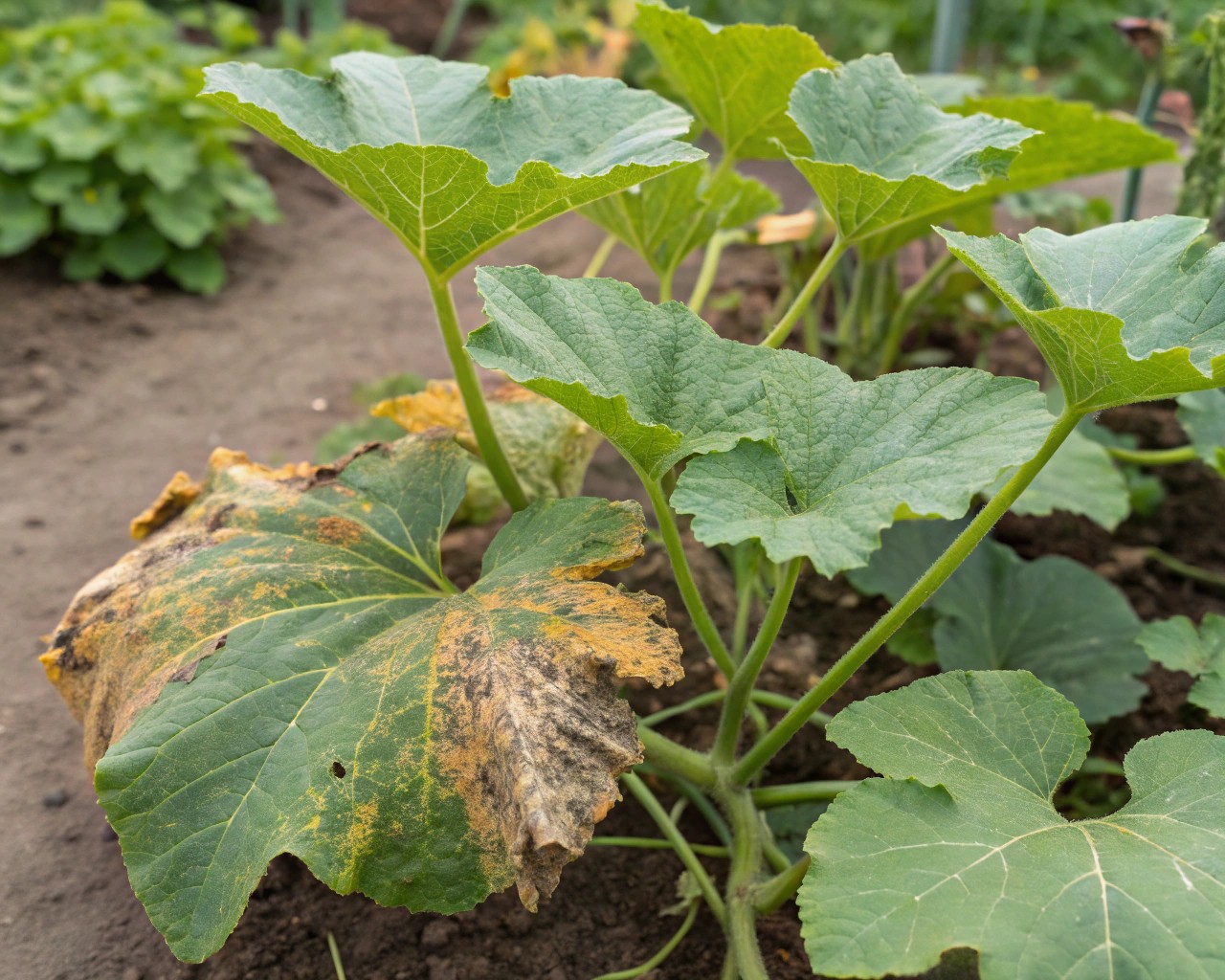
Squash bugs damage plants by piercing leaf and stem tissue with their needle-like mouthparts and injecting toxic saliva. This causes:
- Wilting leaves
- Blackened tissue
- “Anasa wilt”—a systemic collapse resembling bacterial wilt
- Fruit scarring and deformed growth
They also transmit Cucurbit Yellow Vine Disease (CYVD) via the bacterium *Serratia marcescens*. This pathogen survives inside squash bugs during winter and spreads to new crops in spring, compounding the threat.
Beyond physical damage, squash bug infestations can lead to reduced flowering, fewer fruit sets, and stunted plant growth. Even low populations can severely stress young plants. The bugs’ stealthy nature—hiding under leaves and at the plant base—makes early detection a key factor in successful prevention.
Climate-Based Challenges and Adaptations
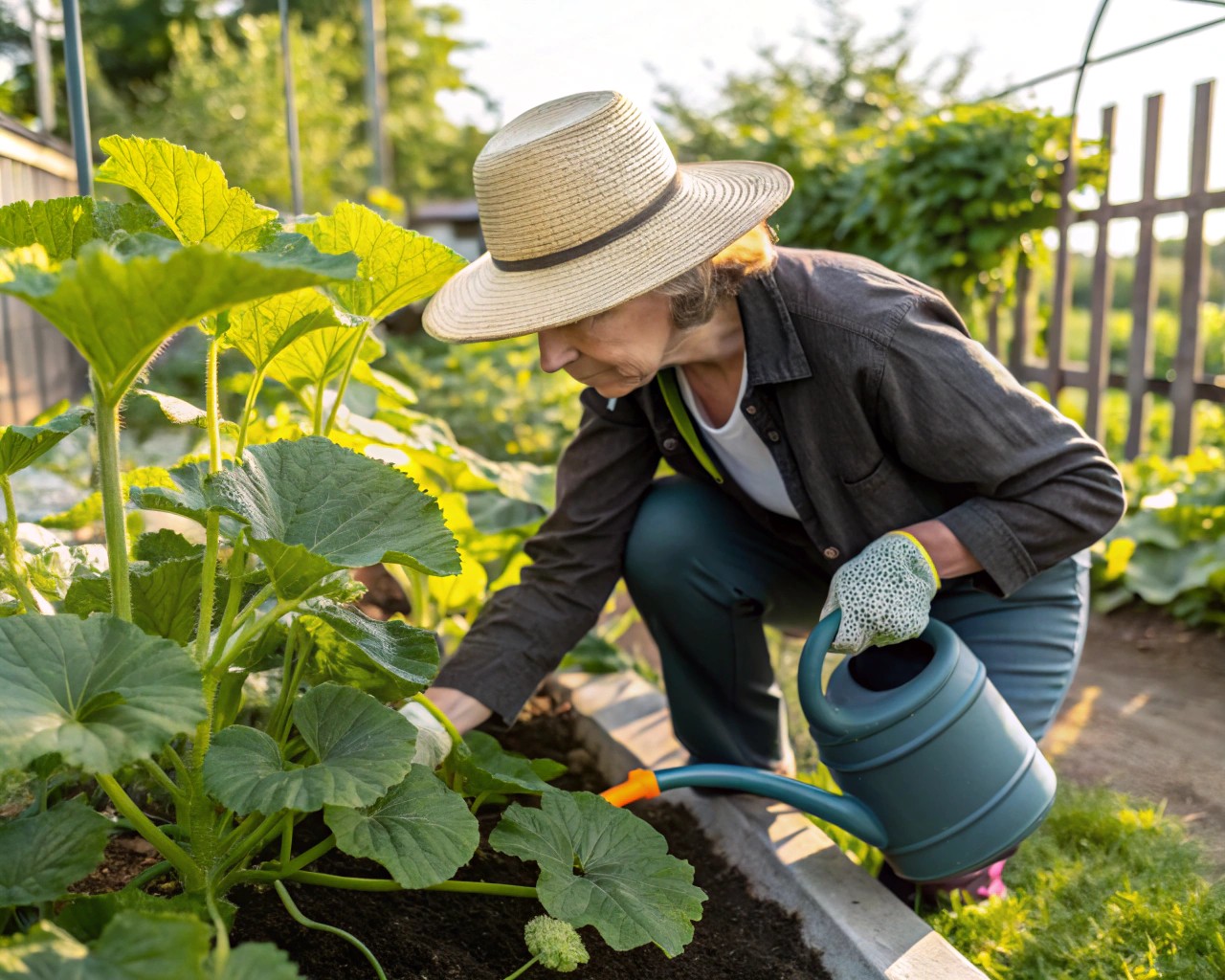
Regional variation affects squash bug behavior and survival:
| Region | Key Traits | Management Focus |
|---|---|---|
| Northern (Zones 3–5) | One generation/year, late emergence | Early-season monitoring, fall cleanup |
| Mid (Zones 6–7) | Two generations likely | Staggered planting, ongoing scouting |
| Southern (Zones 8–10) | Multiple generations, high overwinter survival | Intensive monitoring, trap cropping, sanitation |
Mild winters result in higher adult survival. Fall cleanup and destruction of plant debris is essential, especially in warmer areas.
Climate also affects the choice of intervention. In cooler climates, natural die-off over winter reduces the need for aggressive controls. In hotter regions, plan for year-round vigilance, as overlapping generations mean all life stages may be present at once.
Cultural Tactics for Prevention
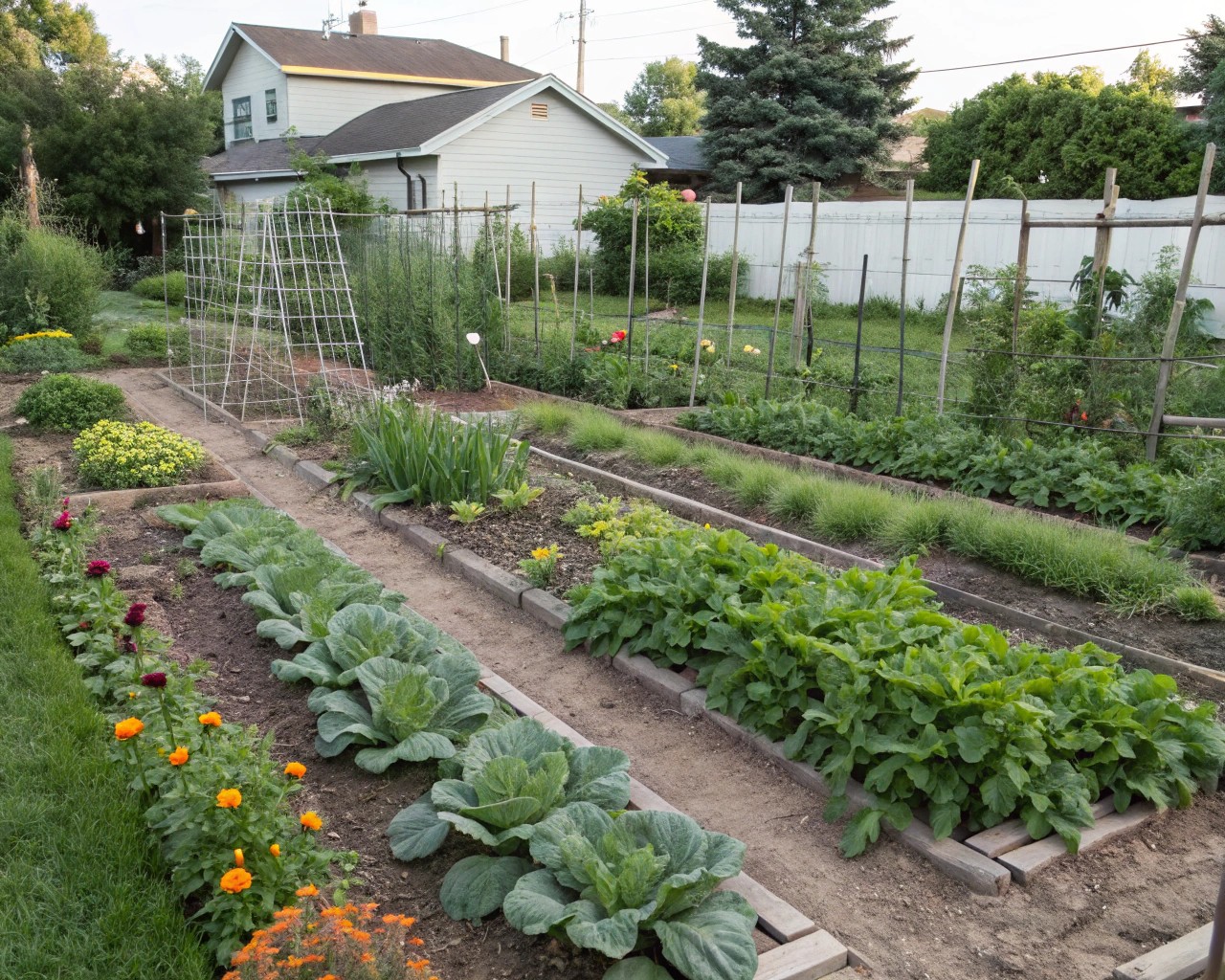
Prevention starts with good garden hygiene:
- Remove crop debris at season end
- Rotate cucurbit crops to new beds annually
- Avoid mulch early in season (can harbor pests)
- Use trap crops and delay planting main crop
tip: Remove any boards, woodpiles, or debris where bugs might overwinter. Tidy fall gardens = fewer spring bugs.
Additionally, planting squash later in the season when early generations have passed can help avoid heavy infestations. Choosing sunny, well-drained areas for your squash plants also discourages pests.
Biological Control Options
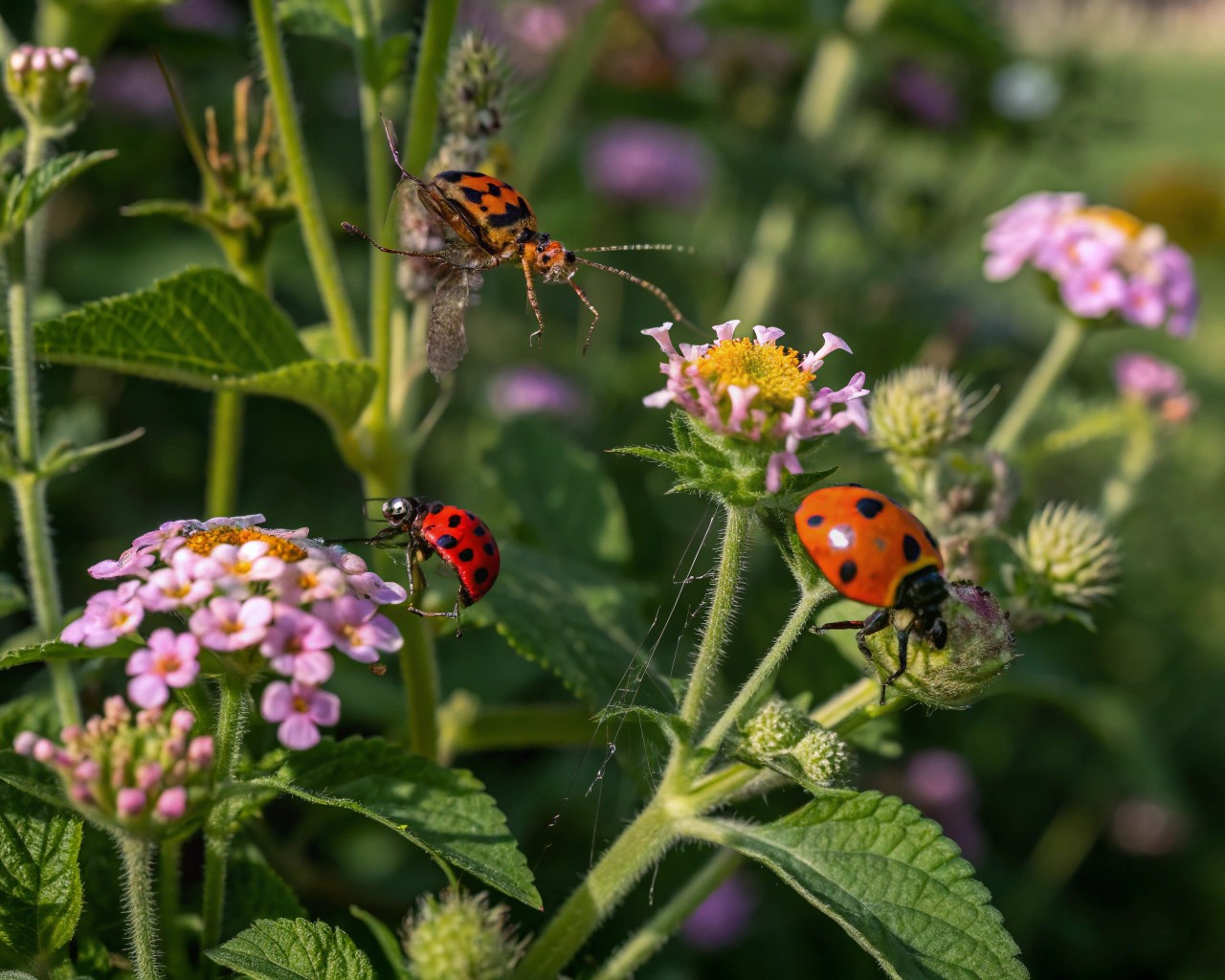
Natural predators and parasitoids help reduce populations:
- Ground beetles eat eggs
- Big-eyed bugs and damsel bugs feed on nymphs
- Parasitic tachinid flies target adults
Encourage beneficials by:
- Planting nectar sources (e.g., alyssum, dill)
- Avoiding broad-spectrum insecticides
- Leaving areas with ground cover nearby
tip: Companion plant flowers like yarrow, calendula, and dill to attract predatory insects.
Other generalist predators like spiders and predatory stink bugs may also contribute to suppression. Though they won’t eliminate squash bugs entirely, these helpers form a critical foundation for integrated pest management (IPM).
Chemical Controls: When and What to Use
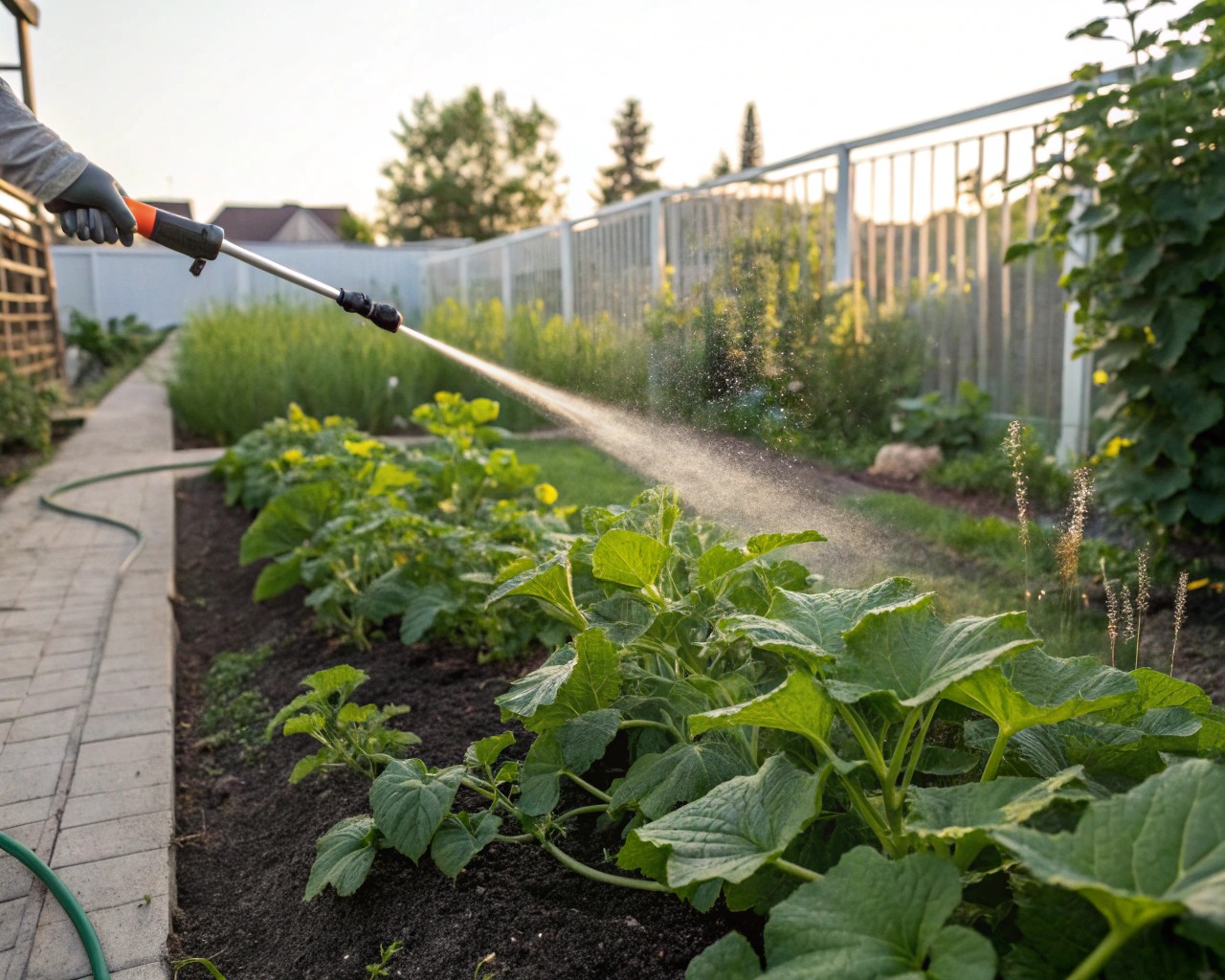
Target young nymphs—not adults, which are harder to kill:
- Spinosad: Effective on nymphs, low toxicity to bees
- Permethrin: Moderate control, best used in evening
- Cyfluthrin/cyhalothrin: Needed for adult control
Apply late afternoon/evening when pollinators are less active. Focus sprays on undersides of leaves where eggs and nymphs cluster.
Note that chemical controls should be used sparingly and only as a last resort. Overuse can harm beneficial insects and promote resistance.
Resistant Varieties and Cultivar Choice
Choose resistant or less-preferred varieties:
- Cucurbita moschata types (e.g., butternut, tromboncino) show greater resistance
- Bush butternut offers compact growth and tolerance
- Avoid C. pepo types like zucchini in high-pressure areas
Resistance comes from stem toughness and unpalatable tissue. Not immune, but helps reduce spread.
For small gardens, select varieties that mature quickly and can be harvested before peak squash bug season. Interplanting resistant types with more susceptible ones may help dilute pest pressure.
Trap Crops: Strategic Sacrifices
Blue Hubbard squash is the gold standard for trap crops:
- Plant 2–3 weeks earlier than main crop
- Place at plot edges or row ends
- Monitor and treat trap plants heavily
tip: Use traps to lure bugs away, then treat with insecticidal soap or neem.
Other potential trap crops include yellow crookneck and certain ornamental gourds. Be sure to remove trap crops before they become a breeding ground.
Integrated Pest Management Calendar
Use a season-long plan to stay ahead:
| Time | Actions |
|---|---|
| Late Fall | Remove plant debris, till soil, destroy eggs |
| Early Spring | Set traps, clean overwintering shelters |
| Planting | Use row covers, avoid mulch early on |
| June–July | Scout for eggs/nymphs, hand-pick, spot-spray |
| Late Summer | Pull heavily infested plants early |
Extended Considerations: Season’s End and Next Year
Post-season management greatly influences next year’s pressure. After final harvest:
- Remove all plant residue and compost only if hot composting
- Till soil to expose overwintering bugs to predators and frost
- Avoid storing cucurbit debris near planting zones
In early spring, inspect overwintering shelters such as shed corners, mulch piles, and beneath raised beds.
tip: Consider planting sacrificial cucurbit seedlings near overwintering sites to trap emerging adults.
Squash Bug Life Cycle and Control Table
| Life Stage | Timing | Control Focus |
|---|---|---|
| Egg | Early to mid-summer | Hand-pick eggs, encourage predators like ground beetles |
| Nymph (instars 1–5) | Mid-summer | Target with insecticidal soap, spinosad, natural predators |
| Adult | Spring (overwintered), late summer (new generation) | Use resistant varieties, trap crops, targeted evening sprays |
Conclusion
Squash bug control requires vigilance, especially in warm zones with multiple generations. No single tactic works alone—successful management depends on layering strategies. By combining cultural cleanup, resistant varieties, trap cropping, biological helpers, and well-timed sprays, you can keep this tenacious pest in check. Adapt your strategy to your region and growing conditions, and review it yearly for continued success.
